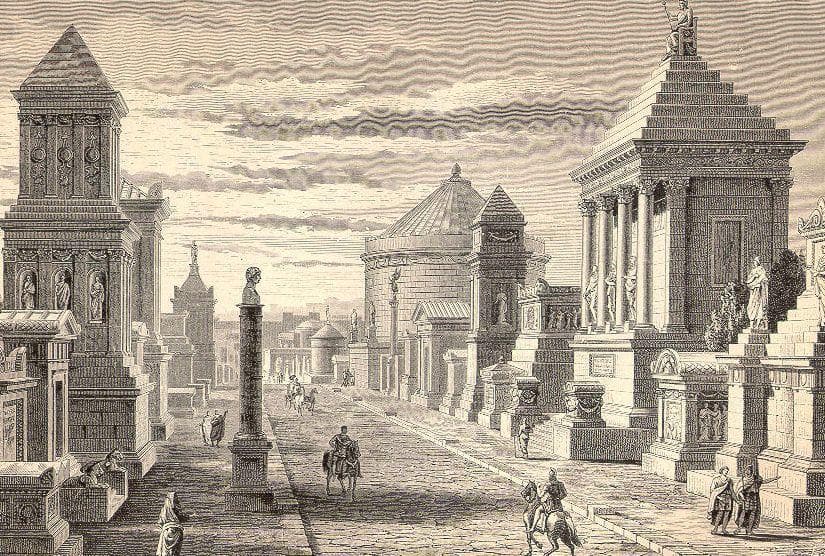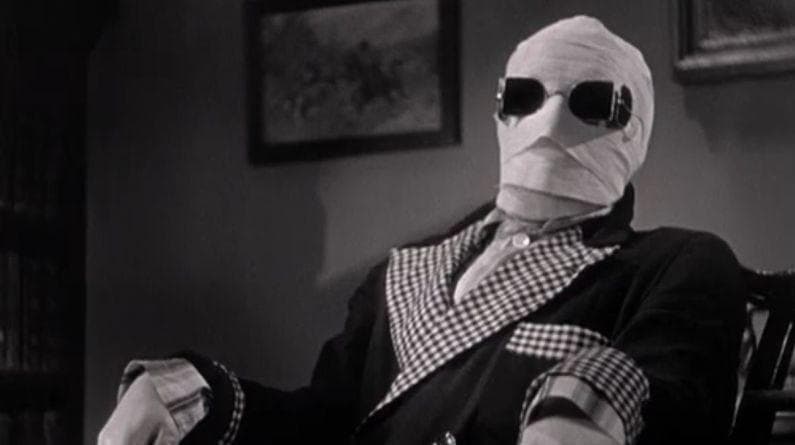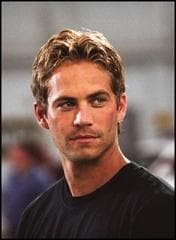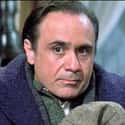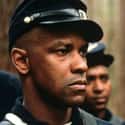-
(#11) Erica Albright
- The Social Network
The Social Network explores one of our modern-day "geniuses," Facebook founder Mark Zuckerberg, but it starts with an all-too-relatable moment. Zuckerberg (Jesse Eisenberg) is having drinks with his girlfriend Erica Albright (Rooney Mara), and it's immediately obvious he doesn't respect her. After a few too many cracks about her supposedly inferior education and status, Albright breaks up with him. As a parting shot, she tells him the reason he's had little success with women isn't because he's a nerd, but because he's an a**hole. In retaliation, Zuckerberg goes back to his dorm room and drunkenly creates a website that allows users to rank his female Harvard classmates by attractiveness. This website, "Facesmash," becomes "The Facebook," which eventually becomes the multi-billion-dollar behemoth we all know today.
The story of Facebook's founding didn't quite happen that way, for the simple fact that Erica Albright wasn't a real person. The scene takes place during Zuckerberg's sophomore year, when the real Zuckerberg was dating Priscilla Chan, whom he married in 2012. When The Social Network came out, Zuckerberg criticized the film for its inaccuracy. But for his part, screenwriter Aaron Sorkin freely admitted to using poetic license for the sake of a better story. "What is the big deal about accuracy purely for accuracy's sake?" Sorkin said at the time. "And can we not have the true be the enemy of the good?"
Practically since Facebook first launched at Harvard in 2004, people have vilified Mark Zuckerberg for everything from allowing user information to be hacked to refusing to censor Holocaust deniers. For a Facebook-hater, it might be tempting to credit the website's creation to something as a petty as post-dumping resentment. Zuckerberg's critics have plenty of reasons to criticize him, but creating Facebook to spite an ex-girlfriend isn't one of them.
-
(#4) Sherif Ali
- Lawrence of Arabia
Lawrence of Arabia is ostensibly the story of T.E. Lawrence (Peter O'Toole), the real-life British intelligence officer who helped spark an Arab revolt against Ottoman rule during WWI. But it's really the story of Lawrence and Sherif Ali (Omar Sharif), a tribal leader who introduces Lawrence to Arab culture and co-leads the rebellion from the beginning. The onscreen chemistry between O'Toole and Sharif produced one of cinema's very first bromances.
In reality, there was no single Arab leader who stayed by Lawrence's side for the entire Arab Revolt of 1916. Sherif Ali was originally based on Sharif Hussein bin Ali, a real-life Hashemite leader whom the real Lawrence mentioned in his book The Seven Pillars of Wisdom. But overall, he was a composite of several different Arab leaders who worked with Lawrence during the rebellion. Like many composites in historical movies, Sherif Ali was created to summarize the accomplishments of many different people. Robert Bolt, the film's screenwriter, wrote that Sherif Ali was designed to represent the "emergent Arab nationalism" Lawrence relied on to destabilize the Ottoman Empire.
-
(#5) Jimmy Malone In 'The Untouchables'
For a movie that features an epic clash between two iconic figures in the history of American crime - Eliot Ness (Kevin Costner) and Al Capone (Robert De Niro) - it's a Chicago cop who steals the movie. Without Jimmy Malone (Sean Connery) pushing him to do what's necessary (even if it's outside the law), Eliot Ness would have never had the nerve to take down Capone. Malone gets all the best lines, including this classic: "They pull a knife, you pull a gun."
If the real Ness actually had a grizzled cop mentor, his name wasn't Jimmy Malone. The character was loosely based on a real-life law enforcement official named Michael Malone, but their similarities don't go beyond the surname. Michael wasn't an Irish-American who spent his entire career in the Chicago Police Department. Rather, he was a New Jersey-born IRS investigator who infiltrated Al Capone's organization for three years to help build the case against them. Far from the do-whatever-it-takes loose cannon Connery plays in the movie, the Michael Malone has been described as "the greatest undercover agent in the history of law enforcement."
But the story of Eliot Ness familiar to most Americans has never been about factual accuracy. The modern myth of Ness as a larger-than-life crime fighter dates back to his 1956 memoir, also called The Untouchables, which details his exploits as a Prohibition Agent in the 1920s and '30s. In the book, Ness essentially portrays himself as the man who single-handedly took down Al Capone, ignoring the major contributions of people like Attorney General E.Q Johnson and IRS agent Frank Wilson. ABC quickly adapted Ness's memoir into a hit TV series starring Robert Stack. The TV show furthered Ness's mythologization by regularly pitting him and his squad against iconic American gangsters he never met in real life. The 1987 Brian De Palma movie was essentially a reboot of that series, inheriting its oversimplified "good guys vs. bad guys" ethos.
-
(#12) Bobby Ciaro In 'Hoffa'
Danny DeVito's 1992 biopic, Hoffa, explores the life of infamous labor leader Jimmy Hoffa, but the story is told itself primarily through the eyes of Bobby Ciaro, Hoffa's doggedly loyal lieutenant. Ciaro first meets Hoffa while working as a truck driver in 1935, and Hoffa convinces him to join the Teamsters union. Ciaro eventually becomes Hoffa's right-hand man, participating in Hoffa's legal and less-than-legal activities. In 1975, everything comes to an end when Hoffa and Ciaro are both whacked.
The real Jimmy Hoffa didn't rely on just one loyal sidekick. Like many of the other characters on this list, Bobby Ciaro is a composite based mainly on two people: Hoffa's adopted son Chuckie O'Brien (who was also the inspiration for Tom Hagen in The Godfather), and president of the Local 299 union Bobby Holmes. Unlike Bobby Ciaro, the real Chuckie O'Brien was much less loyal to Hoffa. In the months before Hoffa's infamous 1975 disappearance, the two had a falling out when Hoffa failed to back O'Brien's bid for an administrative job in Local 299, and O'Brien retaliated by spreading rumors that Hoffa was an FBI informant. O'Brien also wasn't taken out with Hoffa. In reality, he was suspected of being involved in the slaying.
-
(#3) Dr. Nicholas Garrigan
- The Last King of Scotland
The Last King of Scotland follows a young Scottish doctor named Nicholas Garrigan (James McAvoy), who travels to Uganda in 1970 in search of adventure. Shortly after he arrives, General Idi Amin takes over the country in a coup. Garrigan becomes Amin's personal physician and eventually one of his closest advisors, but he soon grows disillusioned with Amin's brutality. (And has an affair with one of Amin's wives.) Garrigan eventually decides to slay Amin for the good of the country, but he's caught and tortured before he finally escapes.
The fact that the movie isn't about a king and doesn't take place in Scotland should tell you it's not exactly a documentary. It was based on a 1998 novel of the same name, which was only loosely based on real events. While Idi Amin was very much a real person and really was a homicidal dictator, he never had a Scottish doctor as part of his inner circle.
The closest real-life analog to Dr. Nicholas Garrigan was a white British army officer named Bob Astles. Like Garrigan, Astles went to Uganda in search of adventure. But unlike Garrigan, he actively sought to be a member of Amin's regime, and willingly participated in Amin's offenses. Like Garrigan, Astles became the only white person in Amin's inner circle, but he was less a political advisor than an unofficial fixer who eliminated anyone who stood in Amin's way. At one point, Astles was nicknamed "the white rat" after he forced Ugandan expatriates to kneel before Amin. After Amin's regime fell in 1979, Astles fled to Kenya but was extradited and served a six-year sentence in a Ugandan prison. It's estimated that Amin's regime claimed more than 300,000 lives, but Astles continued to deny any wrongdoing until his passing in 2012.
-
(#8) Private Trip In 'Glory'
The 1989 epic Glory tells the story of the 54th Massachusetts Infantry Regiment, a real-life regiment that was the second all-Black unit to fight for the Union Army in the Civil War. Led by a white commanding officer named Robert Gould Shaw (Matthew Broderick), the 54th quickly attracts many recruits to fight against the Confederacy. Among them is Private Silas Trip. Trip is a runaway slave from Tennessee who joined the 54th in 1862, and he proves to be one of the unit's most strong-willed members, refusing to accept the Union Army's racial discrimination. When Trip's fellow soldiers are denied shoes, he deserts to procure some, then gets caught and flogged. Later in the movie, when the Army tries to pay the 54th's soldiers less money than white soldiers, Trip rips up his pay voucher in protest and inspires the rest of the 54th to do the same. In the movie's climactic assault on Fort Wagner, after Shaw is shot down while carrying the regimental flag, Trip rescues the flag before being taking a fatal bullet himself.
Aside from Colonel Shaw, most of the characters in Glory are invented, including Private Trip. One of Trip's deeds was based on the real-life heroics of a soldier named William H. Carney, who really did rescue the regimental colors during battle. But unlike Trip, Carney survived the fight and became the first Black soldier to receive the Medal of Honor. The pay dispute really did happen, although it was Shaw himself and not one of his soldiers who led the protest. If anyone in the 54th actually did go AWOL to swipe shoes, they wouldn't have been flogged for it, as the US Army banned the practice in 1861.
But overall, the movie does do justice to the 54th, both their heroics in battle and the prejudices they faced.
New Random Displays Display All By Ranking
About This Tool
Historical movies can let us learn about the development of human civilization and real historical events, great movies will help us to have a unique connection with great historical figures and legends. Many producers who use history as the theme always tout the historical accuracy of their movies, but in many cases, characters and events are often exaggerated or incorrectly depicted.
You may never know that a number of impressive movie characters were never actually existed in history, even some leading roles in historical movies. Here the random tool lists 12 fictional major characters in historical movies that may surprise you.
Our data comes from Ranker, If you want to participate in the ranking of items displayed on this page, please click here.



